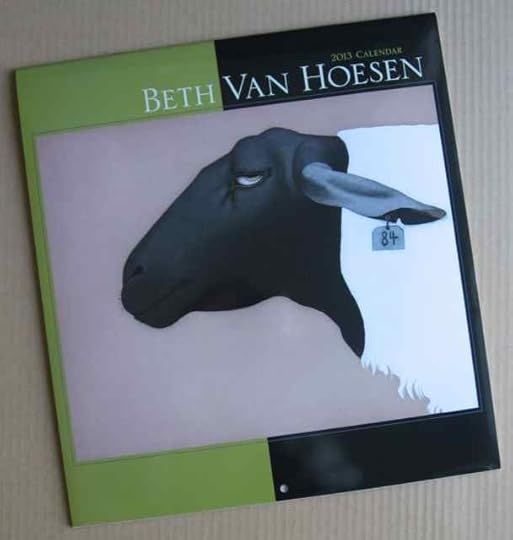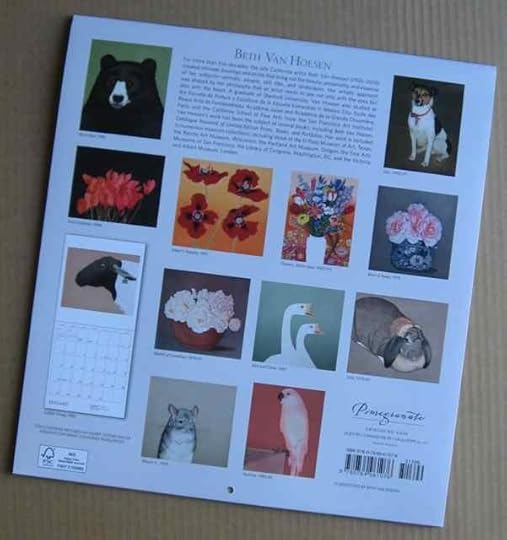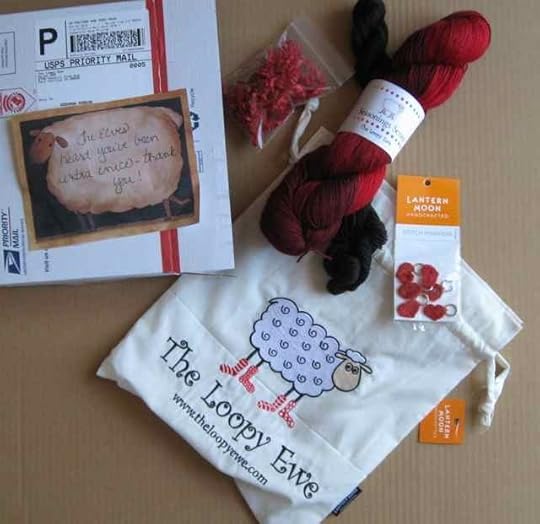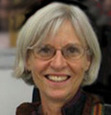Researching sheep (still), and miscellaneous semi-related comments
When Carol Ekarius and I wrote The Fleece & Fiber Sourcebook, my responsibility focused on the fibers and hers on the animals. While I got into research and writing on some of the species and breeds where I'd already done a lot of digging and thinking (notably Soay, Boreray, and unsnarling a few of the Cheviots right at deadline), for the most part she handled breed definitions and history. We both worked to our strengths and backgrounds. It was an excellent division of labor.
Now that I'm teaching, and don't have the book deadlines pushing me so hard, I'm building into my life opportunities to study additional breed history to increase my understanding of how the fibers we have to work with have been, and are, influenced by social, political, economic, and geographic forces.
At the end of next week, I'm teaching a new two-day workshop at The Spinning Loft, in Howell, Michigan. It's called Three Ls and Three Cs: Two Clusters for Spinners’ Delight and Edification.
Each day will focus on three breeds that are related historically and very different to spin.
The "three Ls" include Leicester Longwool, Border Leicester, and Bluefaced Leicester. These three breeds from the British Isles all have lustrous longwool fleeces that differ from each other in enchanting ways, and examining them will give us an opportunity to look at the shifts that came with early understandings of genetics, along with changes induced by human population growth.
The "three Cs" are Corriedale, Cormo, and Coopworth. These three come from the Pacific nations of New Zealand and Australia. They link to the classic European breeds but take them to different places in the fiber spectrum, again pushed by social and economic forces that are related to, but not at all the same as, those that produced the British wools we have today.
Every time I research a breed, I make amazing discoveries that apply directly to my fiber work and that also compel me to read and think more.
What I'm trying to figure out now is how (other than workshops and classes, because I can only do a few of those each year) to present the material I'm coming up with—and wondering whether (and how many) other fiber folk may be interested in examining the topics at this depth. I know some are. I don't know how they might want to access the information. In the "old days," I would have written another book (although I'm not sure it would ever have gotten finished). In these "new" days, it's tempting in many ways to throw it out on the internet for free, although I have no idea how I could afford to pay the bills if I did that. (I'm not willing to put ads on my blog or elsewhere).
At the moment, I don't need to solve those problems. At the moment, I have a workshop to teach next week and will be able to spend time with people with whom I can share these insights I'm mining and collecting out of a variety of sources. I'm pulling together disparate bits of information with the help of graph paper, pondering, and some computer programs. (Right now, I'm using Illustrator to make timelines and breeding charts and other graphics that pull together what I'm seeing in ways that I can present to others. I've been dipping into Tinderbox for collecting and organizing thoughts while they're still at the "scrap" level. I need to learn to use DevonThink, into which I have been throwing resources for a while but from which I haven't figured out how to retrieve stuff. I need a few months just to learn the basics of the software that I now need to use because the scope of my work has exceeded the previous systems.)
This morning, I spoke with Carol at The Spinning Loft (another Carol) about the wools we'll have to play with while we talk about how the breeds came into being. We'll have in our hands the tangible evidence that goes with the history. It doesn't get better than that.
_________
Meanwhile.
I bought one of my calendars for next year. I happened across it at the Tattered Cover on a visit a couple of weeks ago, thought about it at length, and purchased it at the Colfax store on Wednesday when I needed to be in Denver again. I was glad to find that a copy had waited for me to return.
It's not a sheep calendar. The only sheep image is this one Suffolk. I looked across the internet for the possibility of getting a print of this piece, and while they exist they're nowhere near affordable for me. Artist Beth Van Hoesen is unfortunately no longer with us, although from her 84 years she left a splendid legacy. I'm captivated by her sense of graphic design as well as her ability to dance between the unique and the universal.
The other images in the calendar also appeal to me, but yes, the Suffolk hooked me. People talk about sheep as stupid. They are not. The relationships between humans and animals are complex, and far from one-sided. Beth Van Hoesen captured that here, and the other art selected for this calendar speaks to the conditions of some other inhabitants of our world. It is, as a whole, a celebration of individuality and diversity.
I can live with that on a daily basis for 2013.
______
Speaking of 2013, my teaching calendar is penciled in. Because of my mother's stroke, I haven't had time to finalize the arrangements for several events and I need to get on that soon. One of the things that's in the works for late 2013 or some time in 2014 is another trip to the British Isles, for both research and some teaching.
______
Unexpected postal delivery:
To whoever sent me this surprise package from The Loopy Ewe, thank you! I have not been able to determine, and the elves won't reveal, the source.
Very sweet. A special set of coordinating colors dyed by Lorna's Laces. Something fun and lovely will come of this.
_____
But not until I finish prepping for next week. Well, I could probably wind the yarn into balls. . . .
_____
Note: Because I got 25 spam comments in one day this week, I've notched up the requirements for commenting on this blog. I'm trying to keep them at the minimum reasonable level.






